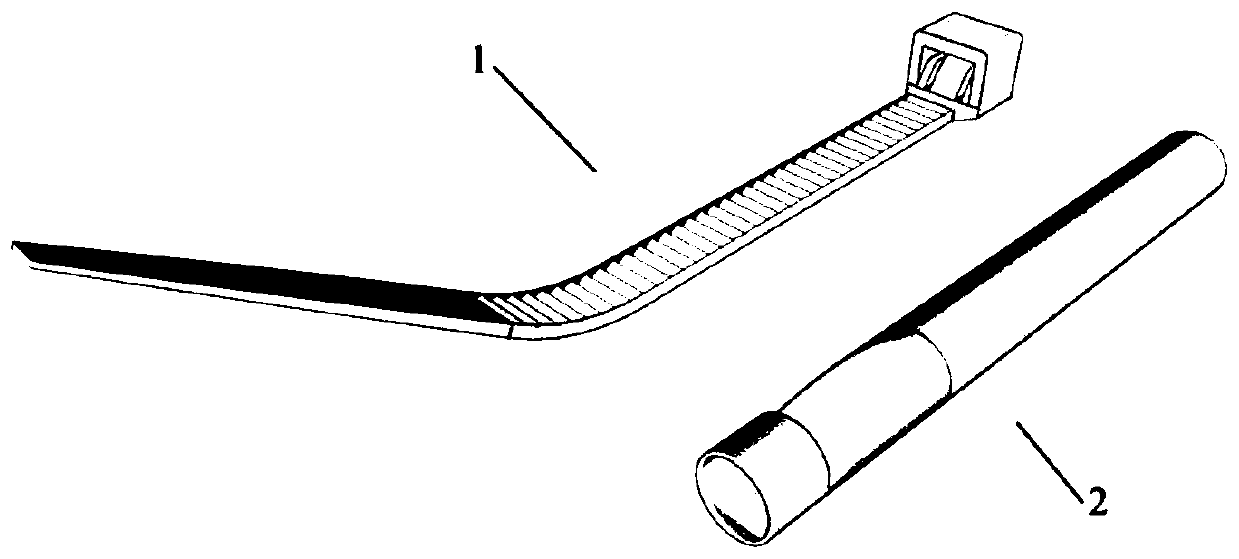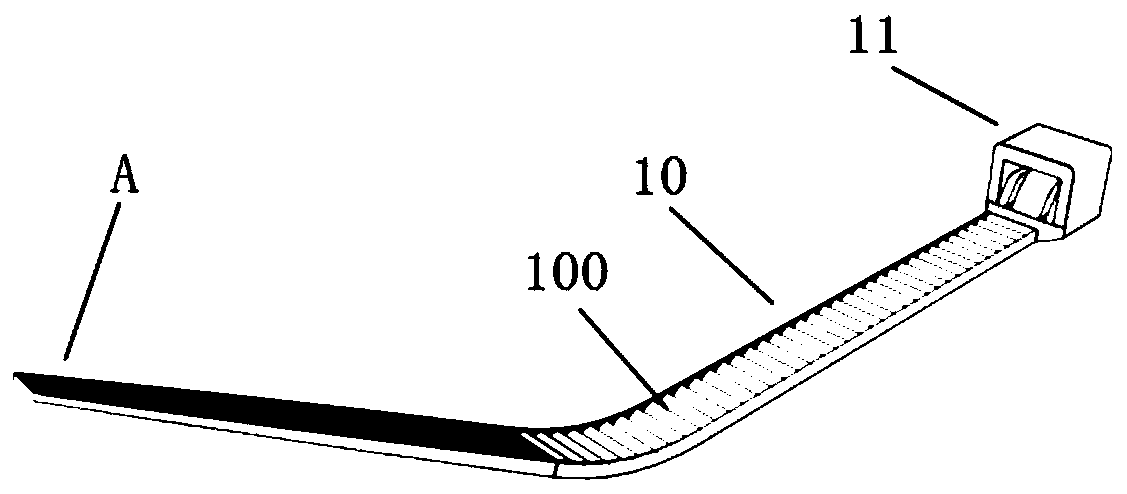Tissue ligation device for laparoscopic surgery
A surgical and ligation device technology, applied in the field of medical devices, can solve the problems of affecting the surgical process, cumbersome process, limited yarn material, etc., and achieves improved sterility, good biocompatibility, and blocking effect. clear effect
- Summary
- Abstract
- Description
- Claims
- Application Information
AI Technical Summary
Problems solved by technology
Method used
Image
Examples
Embodiment 1
[0034] Such as Figure 1-7 As shown, the tissue ligation device for laparoscopic surgery in this embodiment includes two parts, namely a ligation strip 1 and a retraction rod 2 .
[0035] Such as figure 2 and 3 As shown, the ligation strip 1 of this embodiment includes a rack 10, the upper surface of the rack 10 has a first anti-skid tooth array 100, and the first anti-skid tooth array 100 includes several number of the first anti-skid tooth array 100 arranged at equal intervals along its length direction. An anti-slip tooth 101, meeting the size requirements of various lesion tissues. The right end of tooth bar 10 is connected with tooth cavity 11, and tooth cavity 11 is the cavity structure of both ends opening, comprises plug-in end (being the left end of tooth cavity) and protruding end (being the right end of tooth cavity); At least one second anti-skid tooth 110 is engaged with the first anti-skid tooth 101 to limit. The left end of the rack 10 is used to insert the...
Embodiment 2
[0044] The difference between the laparoscopic surgery tissue ligation device of the present embodiment and the first embodiment is:
[0045] In Embodiment 1, at least one of the slope structure of the insertion end of the tooth cavity and the design of the guide slope of the retracting rod is omitted, and the structure of the ligation device is simplified to meet the requirements of different applications.
[0046] Other structures can refer to Embodiment 1.
Embodiment 3
[0048] The difference between the laparoscopic surgery tissue ligation device of the present embodiment and the first embodiment is:
[0049] The tissue ligation device for laparoscopic surgery in this embodiment can also be used in laparotomy. The structure of the retracting rod is not limited to the round rod structure, and its cross-section can also be triangular, quadrangular, elliptical and other structures to meet the needs of different users.
[0050] Other structures can refer to Embodiment 1.
PUM
 Login to View More
Login to View More Abstract
Description
Claims
Application Information
 Login to View More
Login to View More - R&D
- Intellectual Property
- Life Sciences
- Materials
- Tech Scout
- Unparalleled Data Quality
- Higher Quality Content
- 60% Fewer Hallucinations
Browse by: Latest US Patents, China's latest patents, Technical Efficacy Thesaurus, Application Domain, Technology Topic, Popular Technical Reports.
© 2025 PatSnap. All rights reserved.Legal|Privacy policy|Modern Slavery Act Transparency Statement|Sitemap|About US| Contact US: help@patsnap.com



